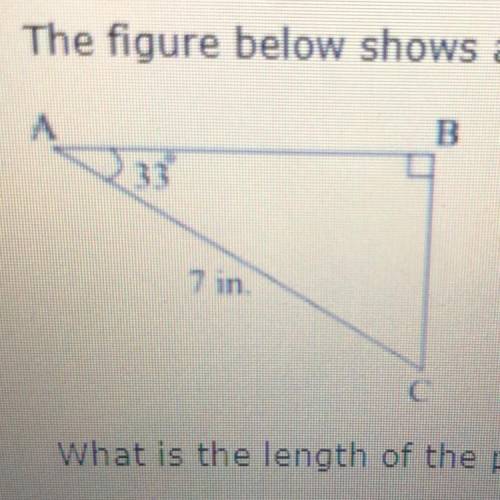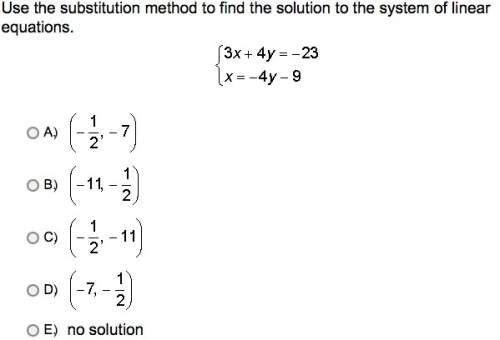The figure below shows a triangular piece of cloth:
+
B
33
7 in
What is th...

Mathematics, 30.04.2021 18:10 Esmer1030
The figure below shows a triangular piece of cloth:
+
B
33
7 in
What is the length of the portion BC of the cloth? (5 points)
O 7 Cos 339
O sin33
O 7 sin 330
O cas 33


Answers: 2
Another question on Mathematics

Mathematics, 22.06.2019 02:30
Apossible wavelength for the color blue is 0.000000492 meter. which of the following is a reasonable estimate for this wavelength for the color blue? a. 5 × 10-6 m b. 5 × 107 m c. 5 × 10-7 m d. 5 × 106 m
Answers: 2

Mathematics, 22.06.2019 02:40
Which method of gathering data will be most effective in learning how diet and fitness choices affect long-term healt
Answers: 1

Mathematics, 22.06.2019 03:00
Of the following, which statement or statements accurately reflect a way in which credit can be safer than cash? i. if your credit card gets stolen, you can cancel it and get your money back. ii. it is harder to lose a single credit card than a large number of bills. iii. if a merchant does not honor the agreement, you can call the credit company and dispute the charges. a. i and iii b. ii only c. iii only d. i, ii, and iii
Answers: 3

Mathematics, 22.06.2019 03:00
In this problem, we explore the effect on the standard deviation of multiplying each data value in a data set by the same constant. consider the data set 14, 6, 8, 15, 15. (a) use the defining formula, the computation formula, or a calculator to compute s. (round your answer to one decimal place.) s = 4.28 (b) multiply each data value by 3 to obtain the new data set 42, 18, 24, 45, 45. compute s. (round your answer to one decimal place.) s = 12.83 (c) compare the results of parts (a) and (b). in general, how does the standard deviation change if each data value is multiplied by a constant c? multiplying each data value by the same constant c results in the standard deviation remaining the same. multiplying each data value by the same constant c results in the standard deviation being |c| times as large. multiplying each data value by the same constant c results in the standard deviation increasing by c units. multiplying each data value by the same constant c results in the standard deviation being |c| times smaller. (d) you recorded the weekly distances you bicycled in miles and computed the standard deviation to be s = 3.8 miles. your friend wants to know the standard deviation in kilometers. do you need to redo all the calculations? yes no given 1 mile ≠1.6 kilometers, what is the standard deviation in kilometers? (enter your answer to two decimal places.)
Answers: 1
You know the right answer?
Questions


Biology, 15.10.2019 13:00


Chemistry, 15.10.2019 13:00

Health, 15.10.2019 13:00

History, 15.10.2019 13:00

Mathematics, 15.10.2019 13:00








Physics, 15.10.2019 13:00








